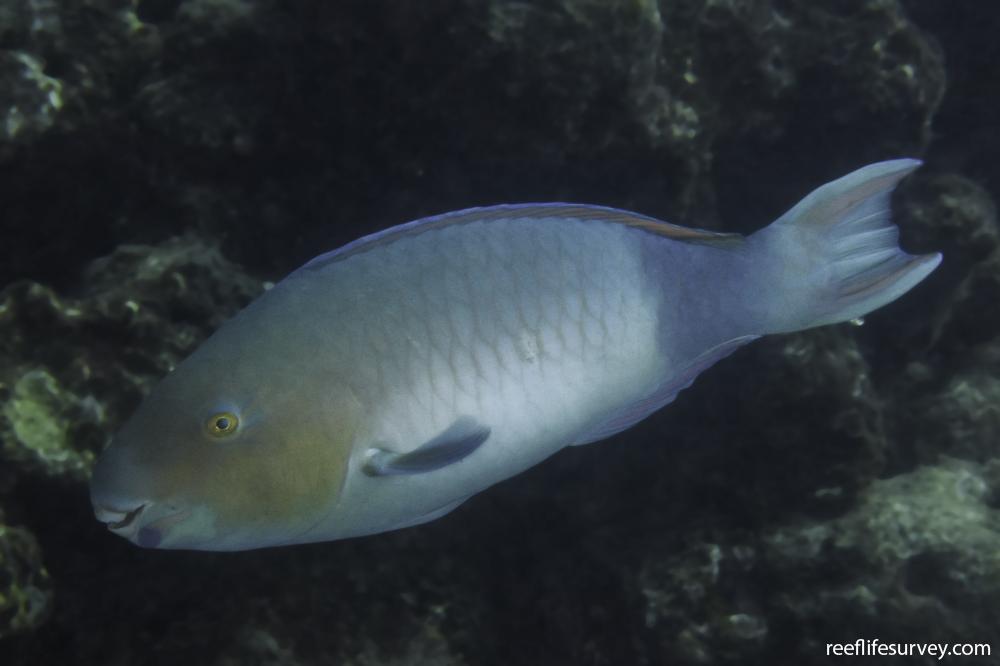Scarus ghobban
Blue-barred orange parrotfishSimilar Species
Same Genus
Distribution
Temperate Australasia, Temperate northern Pacific, Tropical Indo-Pacific
Description
Curved bars on body in juveniles and females formed by large white or blue scales. Juveniles similar to young S. schlegeli, distinguished by lighter, more orange colour, especially on anal fin. Male with 2 short, light lines behind eye and strongly lunate tail markings.
Information
Max Size: 90 cm
Sea Temperature Range: 18.5-31.2°C
Depth: 1-90 m
Habitat Generalization Index: 25.28
Also referred to as the SGI (Species Generalisation Index), this describes the habitat niche breadth of the species. Species with values less than 15 are found in a relatively narrow range of reef habitat types (specialists), while those over 25 may be found on most hard substrates within their range (generalists). Learn more here.
Conservation and Rarity
IUCN Status: Least Concern
Occurrence: Common (27.4% of sites)
Occurrence describes how often the species is found on surveys within its distribution. It is calculated as the % of reef sites surveyed by RLS divers across all the ecoregions in which the species has been observed
Abundance: Several (6 per transect)
Abundance is calculated as the average number of individuals recorded per RLS transect, where present.
Edit by: RD Stuart-Smith, GJ Edgar, AJ Green, IV Shaw. 2015. Tropical Marine Fishes of Australia. Reed New Holland




















































